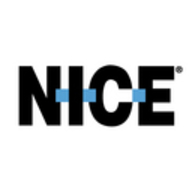

NICE CXone and Zendesk are both key players in the customer service sector, each having distinct advantages. NICE CXone is notable for its omnichannel experience and robust analytics, which aid in decision-making, while Zendesk is respected for easy use and broad integrations.
Features: NICE CXone provides a strong omnichannel experience with advanced analytics, customizable call routing, and scripting tools. It offers a high degree of flexibility for users to control their environment. Zendesk is known for its ease of use, seamless ticket management, and integrations with platforms like JIRA, offering a customizable Help Center and insightful dashboards.
Room for Improvement: NICE CXone could benefit from an improved user interface and easier report creation, with enhancements in audio quality and implementation. Zendesk needs to work on customization and scalability while also refining its reporting features. Users are concerned about its steep pricing model and seek better analytics and social media integration.
Ease of Deployment and Customer Service: NICE CXone uses public cloud deployment, providing flexible scaling and good customer support, although complex issues take longer to resolve. Zendesk offers varied deployment options including public cloud, appreciated for swift handling of daily support queries, though advanced issues can encounter longer waiting times.
Pricing and ROI: NICE CXone offers cost savings through its AWS-based cloud infrastructure, with pricing details often undisclosed. Zendesk, perceived as expensive, provides flexible licensing with robust features that justify the costs for many users. Businesses find the ROI valuable due to its ability to handle diverse customer interactions and support large teams efficiently.
NICE CXone saves time and resources due to its cloud-based nature, where infrastructure management is handled by AWS, reducing the need for me to manage it.
I can tell you that we probably saved at least three employees full-time with the ticket management and the automation and the macros and the user follow-up being built in.
I feel that Zendesk helped us set up our platform for providing support way faster than other platforms due to its easy configuration.
We were able to offer a seamless 24/7 support experience and meet all our SLAs due to the robust nature of the platform.
When I faced an issue with reaching a Poland DID that was ported to NICE CXone, their support team resolved the problem immediately.
We have our own technical account manager which provides us with substantial visibility.
If the issue is network-related or involves configuration, or maybe implementing a new tool, it might take north of 24 hours to identify the right resource to assist you.
There appears to be a lack of connection between the bot and the agents, making it feel scripted rather than helpful.
The technical support provided by Zendesk has been very satisfactory.
Their support team from Zendesk is excellent, similar to what you have in Freshdesk.
I have migrated approximately 500 people to the system, and it can certainly support more users beyond this number.
We have not hit a peak or a turn yet that Zendesk has not been able to go with us or been able to grow with us in the process, change or pivot that the company is making.
Zendesk can scale from very small companies to very large ones.
Zendesk's scalability is excellent.
In general, the stability is good.
While the system often operates without issues, there have been instances of reports involving VM resource congestion, WFM issues, and RT problems.
They are always informing us with a status update and an ETA, and the turnaround time is usually within the same day with no extended downtime that would cause a detriment to our company.
Zendesk is quite stable; we experience major outages only once or twice a year, making it very reliable.
The stability has been quite reliable.
Compared to challengers such as Zoom, which seem more cost-effective, NICE CXone's suite of products is very modular, so as they provide new services, you have to add to your existing package and this balloons your costs since there's an additional license needed to use the new tools, leading to potentially higher out-of-pocket expenses.
The audio quality in NICE CXone has room for improvement, as I experience issues like diffused calls and crackling audio.
Zendesk could actually support HTML on the tickets so we could format our text better than the current options such as size, bold, italic, or underscored, because the text processing is too simple.
Zendesk is missing an AI aspect that could help provide quick answers based on the knowledge housed within the platform.
Zendesk is amazing, and because they are always working on a new upgrade or a new integration, they are very forward-thinking from an engineering perspective.
It is not the cheapest solution nor the most expensive, but it provides value for money.
The experience with pricing, setup cost, and licensing for Zendesk was quite expensive.
The switch from using Avaya, which required connecting to a hard or soft phone, to using WebRTC via a web browser has significantly improved customer service efficiency.
Some of the best features with NICE CXone are the real-time visibility that you have, which empowers you to make adjustments on the fly, such as turning on and off your queues and adjusting how we route calls to our agents.
It allows us to handle more support cases with fewer people due to its advanced artificial intelligence capabilities.
Zendesk is way cheaper than other ITSM platforms such as ServiceNow, providing a good platform at a lower price so we could offer good support with a low budget for the license.
Being able to put response counters on certain tickets and have certain ones that are high priority and have a tighter SLA than lower priority items, being able to categorize them as a question versus an urgent request, and being able to bucket them as feature requests or product enhancements.
| Product | Market Share (%) |
|---|---|
| Zendesk | 10.3% |
| NICE CXone | 6.2% |
| Other | 83.5% |

| Company Size | Count |
|---|---|
| Small Business | 10 |
| Midsize Enterprise | 5 |
| Large Enterprise | 3 |
| Company Size | Count |
|---|---|
| Small Business | 35 |
| Midsize Enterprise | 20 |
| Large Enterprise | 11 |
NICE CXone offers comprehensive solutions for managing customer support across channels, ensuring consistent reporting with integrated dashboards and efficient call management. The platform supports scalability and integration, catering to organizations of all sizes with diverse communication needs.
NICE CXone enhances customer support by providing dynamic content structuring and robust HTML editing. With omnichannel integration, users experience consistent reporting across platforms. The intuitive dashboards allow customizable views, improving supervision and training efficiency. Call management benefits from efficient tagging and audio playback, while tools like inView aid real-time data monitoring and flexible system customization. Challenges include occasional system slowness, dashboard freezes, and the need for a more user-friendly interface. Reporting features could be simplified for easier custom report creation, and users suggest enhancing call quality. The implementation process might pose difficulties, with a demand for additional layout options and interface enhancements. Despite these issues, NICE CXone remains a favored choice for comprehensive customer support solutions.
What are the key features of NICE CXone?NICE CXone is extensively utilized in industries focused on customer support and workforce management, especially within call centers. It optimizes quality management through call recordings and workforce efficiency by managing agent breaks and tasks. Its integration capability with Microsoft Dynamics 365 makes it a strategic tool for organizations aiming to streamline communication processes across multiple brands.
Zendesk Support is intuitive, and it's built with support agents in mind. Everything they need lives in a single, dynamic help desk interface so it's easy to be productive and manage customer interactions.
We monitor all Knowledge Management Software reviews to prevent fraudulent reviews and keep review quality high. We do not post reviews by company employees or direct competitors. We validate each review for authenticity via cross-reference with LinkedIn, and personal follow-up with the reviewer when necessary.